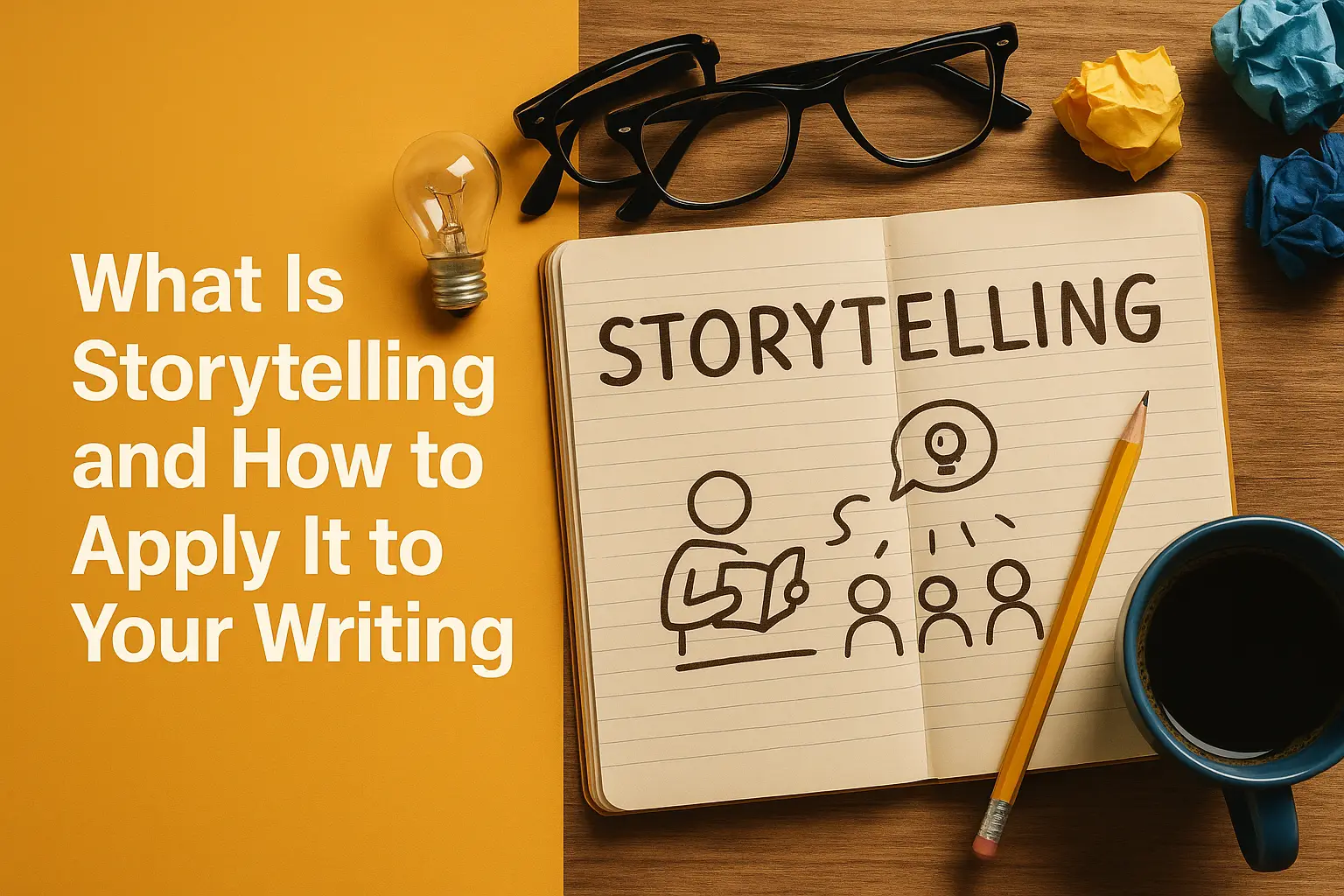In a world filled with information overload, storytelling remains one of the most powerful tools a freelance writer can use to connect, inspire, and persuade. Whether you’re writing blog posts, email sequences, social media content, or web copy, learning to incorporate storytelling into your writing will make your words more memorable — and your results more impactful.
Let’s explore what storytelling really means, why it works, and how to apply it to your freelance writing practice.
What Is Storytelling in Writing?
Storytelling in writing is the art of using narrative elements — characters, conflict, emotion, and resolution — to communicate a message. It’s more than just recounting events. It’s about guiding your reader through an experience that resonates on a deeper level.
Think of storytelling as a vehicle. It takes your reader on a journey from curiosity to clarity, from skepticism to trust, or from problem to solution.
Key elements of effective storytelling:
- Character: Who’s the story about?
- Conflict: What challenge or obstacle do they face?
- Emotion: What feelings are involved?
- Resolution: How is the issue resolved?
- Message: What should the reader take away?
Why Storytelling Works (Especially in Marketing)
People don’t remember facts — they remember feelings. Storytelling triggers emotion, empathy, and imagination. It lights up more areas of the brain than logic or statistics alone.
Storytelling helps you:
- Grab attention in crowded spaces
- Make complex topics feel human
- Build trust through authenticity
- Influence decisions without sounding salesy
Whether you’re writing for a personal brand or a corporate client, stories give your message staying power.
When to Use Storytelling in Your Freelance Projects
You can weave storytelling into almost every type of freelance writing:
- Blog posts: Open with a relatable anecdote or struggle
- Case studies: Tell the client’s journey from problem to success
- Sales pages: Frame the reader as the hero facing a challenge
- Email sequences: Use a mini-story to lead into the pitch
- Social media captions: Share short narratives that drive engagement
- About pages: Tell the founder’s or brand’s origin story
The key is to align the story with the purpose of the content.
How to Apply Storytelling to Your Writing
Let’s break down how to apply storytelling techniques step by step.
1. Start with the Reader
Every great story begins with empathy. Ask yourself:
- What does my reader care about?
- What are they struggling with?
- What transformation are they looking for?
Your goal is to craft a story that mirrors their internal experience — so they feel seen.
2. Create a Hero
Even if you’re writing about a product, course, or brand, the hero of the story is often the reader or customer.
Frame them as someone on a journey, and position the product/service as a guide or tool that helps them succeed.
3. Build Tension
Without conflict, there’s no story. You don’t need a dramatic plot twist, but you do need contrast. Show the gap between:
- Before and after
- Struggle and breakthrough
- Confusion and clarity
Tension keeps people reading.
4. Show, Don’t Just Tell
Use sensory details, dialogue, and concrete examples to bring your writing to life.
Instead of saying:
“She was nervous before her first client call…”
Try:
“Her palms sweated as she stared at the Zoom countdown — five seconds to go.”
That’s the difference between telling a story and inviting readers into it.
5. End with Meaning
Every story needs a takeaway — something the reader walks away with. In marketing, this might be a transformation, a moral, or a call-to-action.
Ask: “What’s the point of this story? What do I want the reader to feel or do next?”
Storytelling Frameworks to Use
If you’re new to storytelling, these frameworks will help:
A. The Hero’s Journey
A universal storytelling model used in books, movies, and marketing:
- The hero faces a challenge
- They resist or struggle
- A guide or insight helps them
- They overcome the challenge
- They return transformed
B. Before–After–Bridge
Perfect for landing pages or social media:
- Before: Describe the problem
- After: Show the ideal outcome
- Bridge: Explain how to get there (your offer)
C. The 3-Act Structure
Used in screenwriting and longer-form writing:
- Act 1: Setup
- Act 2: Conflict
- Act 3: Resolution
These formats keep you focused and ensure your stories hit emotional beats.
How to Practice Storytelling as a Freelancer
You don’t need to be a novelist to write great stories. Here’s how to improve:
- Study stories: Pay attention to how your favorite creators or brands use narrative
- Rewrite your copy: Take a bland paragraph and turn it into a micro-story
- Create a swipe file: Save examples of stories that inspire you
- Use prompts: “Describe a time when…” or “Tell the story behind…”
- Work with case studies: These are goldmines for real-life storytelling
Mistakes to Avoid
- Overloading with details: Be vivid, but don’t slow the pace
- Forcing drama: Keep it authentic — you don’t need a Hollywood plot
- Being too abstract: Use specific characters, situations, and outcomes
- Forgetting the reader: Always tie the story back to the audience’s experience
Final Thoughts: Make Them Feel Something
At its core, storytelling is about connection. It turns transactional content into transformational experiences. When you write stories that move, relate, or inspire — clients will see the value, and readers will remember your words.
